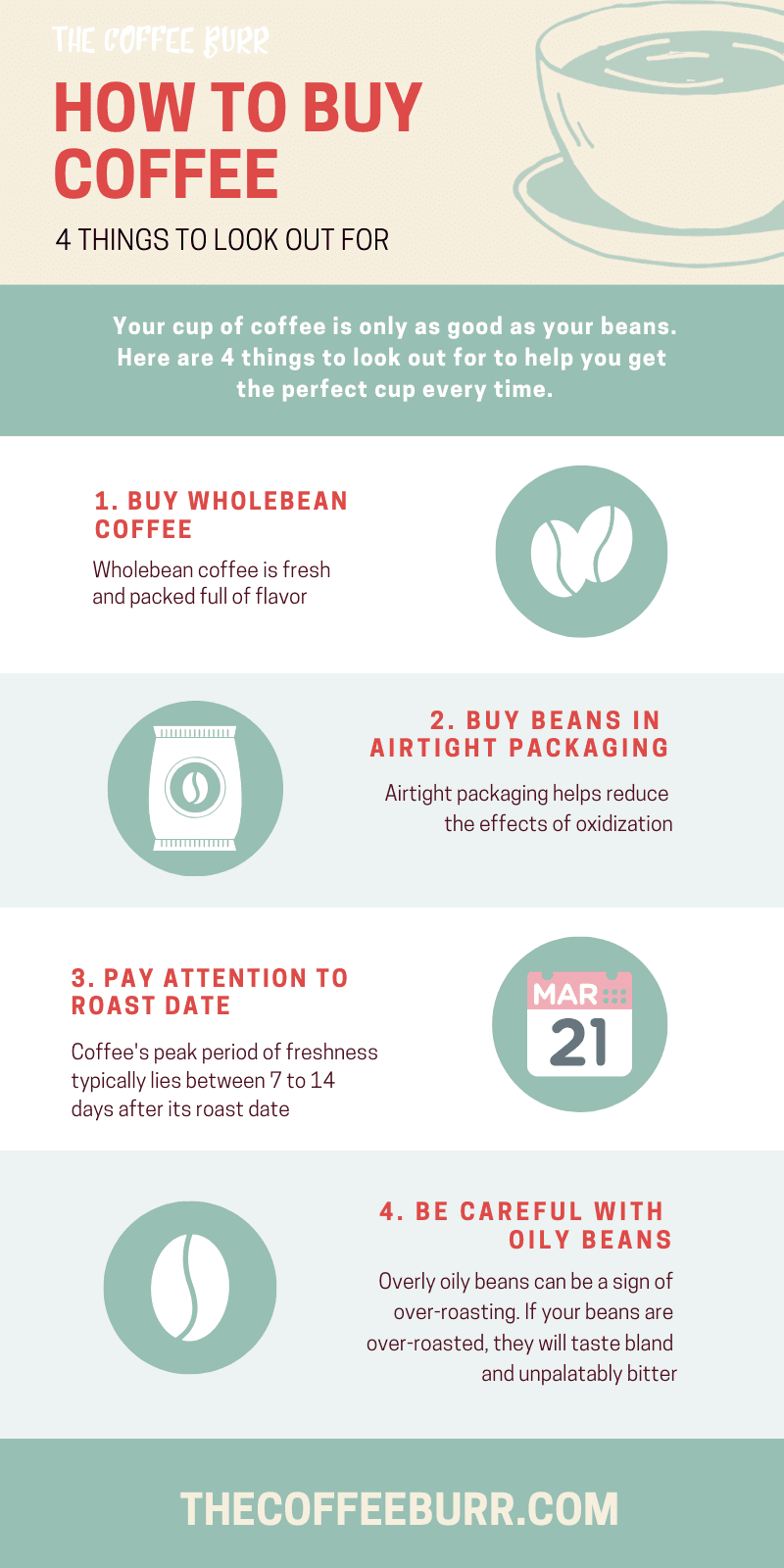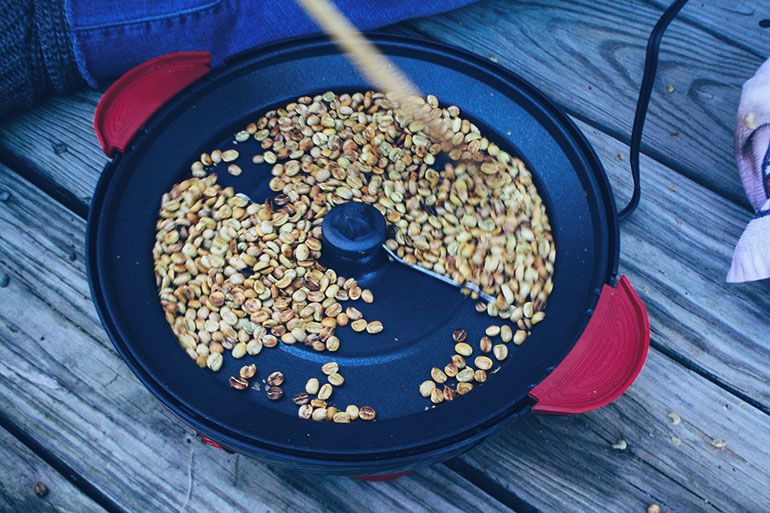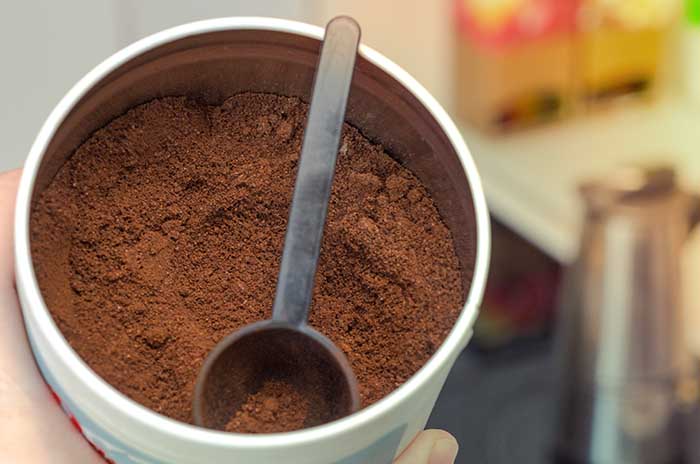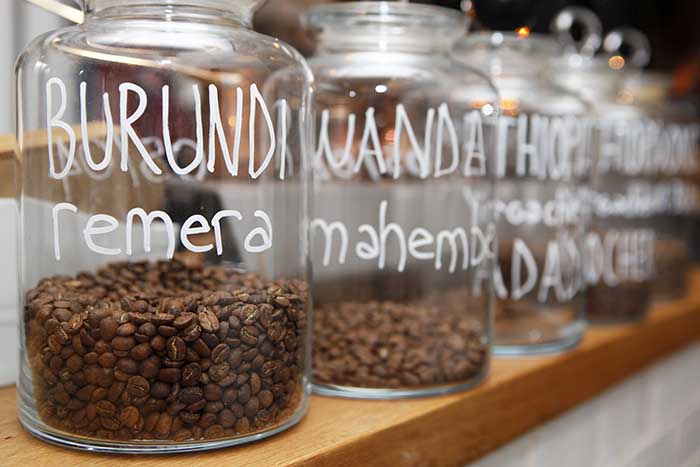I think you’ll agree with me:
Buying good coffee is hard. I mean, among all the different roast types, country of origins, and flavor profiles, where do you even begin to choose something you know you’ll enjoy?
Well it turns out that if you know the main things to look out for then it can in fact be really easy.
Today I’m going to show you the 4 things to keep in mind when buying your coffee. Stick to these and you won’t go wrong.

I have a subscription for my coffee, which ensures that I have beautiful coffee delivered to my door every week. I’m a total addict though, and often have to venture outside to pick up more just to tide me over to my next delivery.
When shopping for beans you need to know exactly what you’re looking for. Everyone has their own preference of roast profiles and flavors, but more importantly there are some important signals of quality that you need to pay attention to.
After all, even though you might have your favorite brewing method locked down, the coffee you make can only be as good as the beans you use for it. If you buy something cheap, then you’re unlikely to enjoy the resulting cup of java that you end up with.
Here are four things to look out for and keep in mind when stocking up. Here’s how to buy coffee.
Buy wholebean coffee
One of the biggest determiners for whether or not a cup of coffee will be up to scratch is if the coffee you bought was in wholebean form or not.
Instant or pre-ground varieties do give you a lot of ease and convenience, but what you get in return is a very poor quality cup.
It might sound snobbish to preach about only using bean coffee over pre-ground or instant, but the difference is similar to using fresh vegetables over old ones.
See, coffee’s aging process starts the moment it’s roasted. When it ages, it gradually loses the natural aromas and flavors that we associate with a good cup of coffee.
This can only mean one thing: The further away you are from the roasting date of your coffee, the less fresh it will taste.
To make matters worse, this is expedited even further once it’s ground. As a result, pre-ground coffee is often stale, dull, and overly bitter.
Wholebean on the other hand manages to maintain its freshness and flavor for far longer, so when you grind and use it at home it will be much fresher in flavor and aroma.
Learn the differences between arabica and robusta beans.
Another reason why pre-ground coffee can be a poor choice is how unspecific it can be to what you need.
What do I mean by this? Well, your coffee needs to be at a grind size that is best for the brewing method you’re using. For example, espresso grounds need to be fine whereas French press needs to be coarse. Pre-ground often doesn’t give you this choice, so if you end with a grind size that lies somewhere in between then you just won’t achieve the results that you want for either.
As for instant coffee… Just no.
Buy beans in airtight packaging
One of the most prevalent aging factors for coffee, whether it be in whole bean or pre-ground form, is oxidization. This exposure to air will make the coffee lose its flavors and aromas, and might even dry out.
It’s important then for beans to be sealed in airtight packaging. This will protect them from the oxidizing effects of air and moisture, helping to slow the process of aging.
You wouldn’t leave food lying out, so the same should be true for coffee.
Luckily, finding beans stored in airtight packaging isn’t too difficult. Most bags of coffee beans come in releasable airtight bags or pouches that have plastic zippers. This means that not only are they protect but also that it’s easy to reseal the beans that you’re not using.
However if you buy beans and discover that they don’t come in an airtight container or pouch then don’t panic: Check the roasting date for the coffee. If it’s within the last 2 weeks then you’re good. The beans should still be fresh enough to use.
Pay attention to roast date
Coffee is a perishable good like any other, so your buying habits with it need to be how they would with food.
In short: Only buy enough for the week and don’t bulk buy. This will help ensure that the beans you have are at peak freshness.
Typically this peak period lies between 7 and 14 days after its roasting date. Allowing the beans to degas and release CO2 sufficiently without straying into stale territory.
Check the roast date printed on the packaging of your coffee and only buy coffee that’s been roasted in the last one to three weeks. This will ensure that your chosen coffee is as fresh and flavorful as possible.
If you buy directly from a coffee shop and the roasting date is not printed on the packaging then ask your barista. If you’re still unable to find out when it was roasted then move on. It’s not worth the risk of anything roasted beyond that 3-week cut-off point, as it’s dull, bitter and stale.
Be careful with oily beans
Oil does form an important part of roasted coffee beans, particularly darker roasts as they help form some of the bitter notes we associate with coffee. They even help form the recognisable crema that forms at the top of espresso drinks.
However, an overly oil surface can be a signifier of over roasting. If your beans are over roasted, they will taste bland and unpalatably bitter. The grounds will also be sticky, which will make extraction during brewing uneven.
Those four tips make up my main considerations when buying coffee. What do you look out for? Let me know in the comments below!



